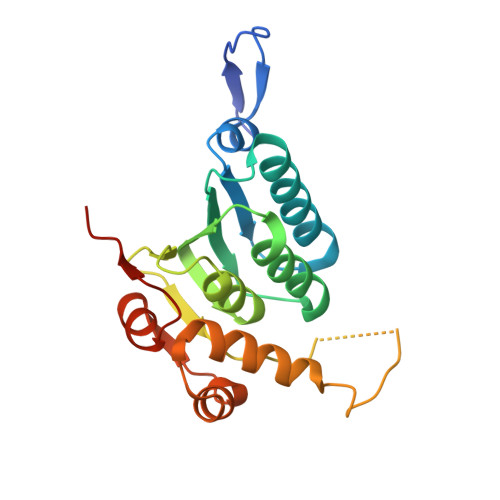Open and compressed conformations of Francisella tularensis ClpP.
Diaz-Saez, L., Pankov, G., Hunter, W.N.(2017) Proteins 85: 188-194
- PubMed: 27802578
- DOI: https://doi.org/10.1002/prot.25197
- Primary Citation of Related Structures:
5G1Q, 5G1R, 5G1S - PubMed Abstract:
Caseinolytic proteases are large oligomeric assemblies responsible for maintaining protein homeostasis in bacteria and in so doing influence a wide range of biological processes. The functional assembly involves three chaperones together with the oligomeric caseinolytic protease catalytic subunit P (ClpP). This protease represents a potential target for therapeutic intervention in pathogenic bacteria. Here, we detail an efficient protocol for production of recombinant ClpP from Francisella tularensis, and the structural characterization of three crystal forms which grow under similar conditions. One crystal form reveals a compressed state of the ClpP tetradecamer and two forms an open state. A comparison of the two types of structure infers that differences at the enzyme active site result from a conformational change involving a highly localized disorder-order transition of a β-strand α-helix combination. This transition occurs at a subunit-subunit interface. Our study may now underpin future efforts in a structure-based approach to target ClpP for inhibitor or activator development. Proteins 2016; 85:188-194. © 2016 Wiley Periodicals, Inc.
Organizational Affiliation:
Division of Biological Chemistry and Drug Discovery, School of Life Sciences, University of Dundee, Dundee, United Kingdom.














